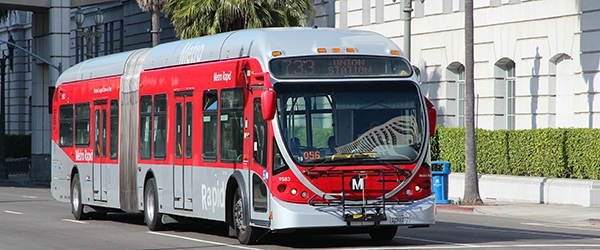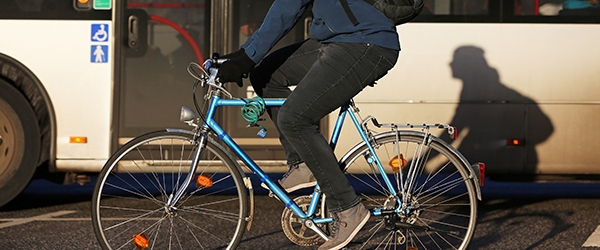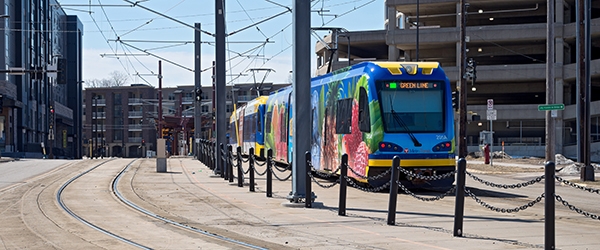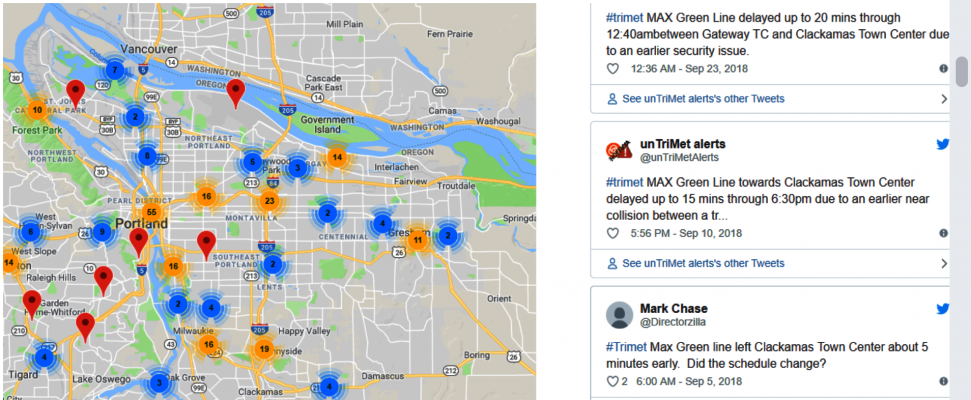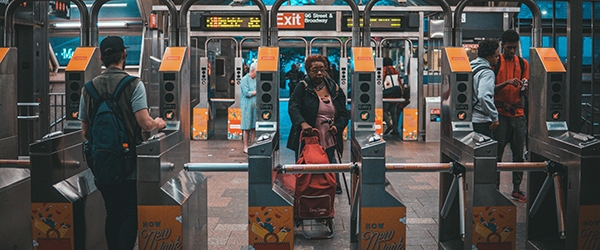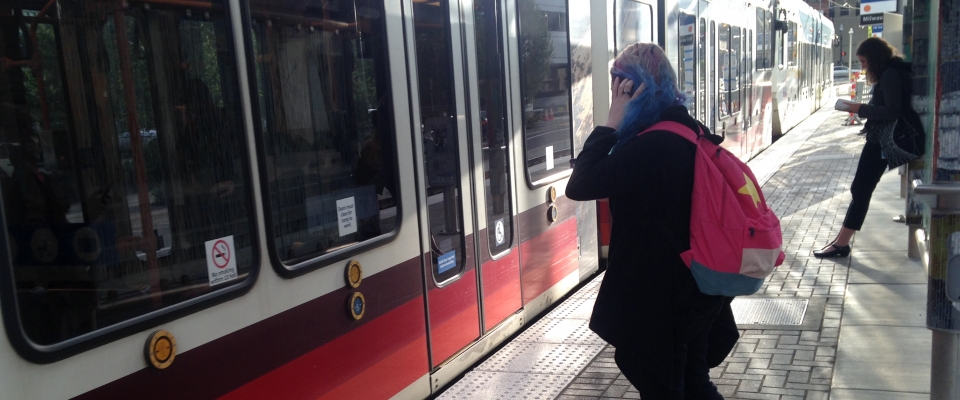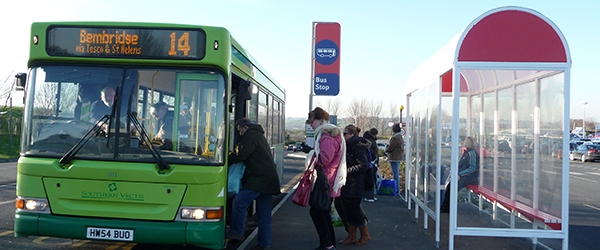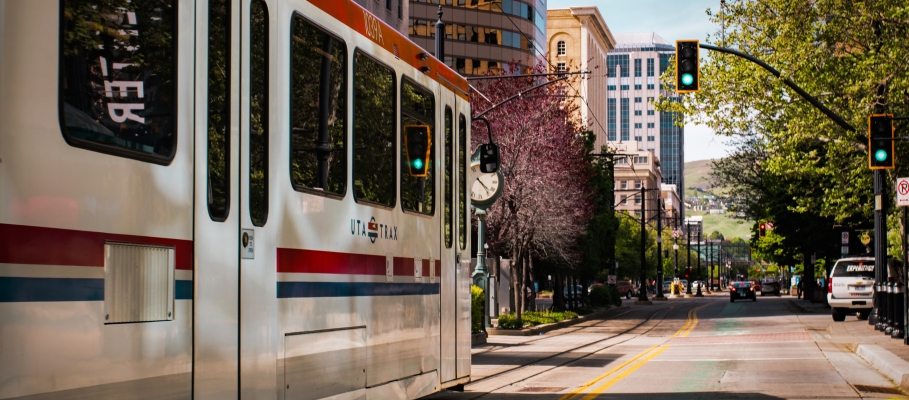In the last twenty years, the population increased over 100% in Collin County...
Read more- Download the Poster Presentation for “Evaluation of Bus-Bicycle and Bus/Right-Turn Traffic Delays and Conflicts” (PDF)
When buses and bikes share space, it's complicated. Not only are there safety risks for cyclists, but also potential delays in bus service and stressful navigation for bus operators. The quest to increase bus speeds—and plausibly...
Read moreTorrey Lyons, University of Utah
- Download the Final Report (PDF)
- Download the Project Brief (PDF)
- Join us on Sept. 19th at Portland State to hear Dr. Lyons’ talk on “The Effects of Transit and Compactness on Regional Economic Outcomes”
Transit agencies often focus on ridership as a primary measure of performance: If enough people are riding transit, then the system is a success. But who are those riders, and why is volume the benchmark?
This viewpoint can skip over an important aspect of a transit agency’s function; that is, providing opportunity to...
Read more- Download the Final Report (PDF)
- Download the Project Brief (PDF)
- Use the STAT Toolbox
- Join the DEMO WEBINAR: STAT will be demonstrated by its creators on Sept 4
With today's profusion of open data sources and real-time feeds, transit agencies have an unparalleled opportunity to leverage large amounts of data to improve transit service. Thanks to NITC researchers,...
Read moreAs transit agencies modernize their fare payment systems, opportunities to pay with cash diminish. This speeds boarding and lowers the cost of operations, while also creating new sources of ridership data. Arguably, service is improved for riders as well, where payment systems work across modes, and in some cases different transit providers, creating a more seamless and simplified experience. Still, about 15% of adults in the United States are without a bank account or credit card, and many rely on restrictive cell-phone data plans or don’t have access to a smartphone. These shares are even higher for public transit users. As transit fare technologies move further from cash, these digitally-excluded riders will find it more difficult to conveniently pay their transit fares.
In the latest project to be funded under the National Institute for Transportation and Communities (NITC)'s Pooled Fund grant program, researchers from...
Read moreThe latest report from the National Institute for Transportation and Communities (NITC) offers recommendations to increase multimodal travel among youth in Portland, Oregon. Communications strategies derived from focus groups of middle-school aged Portland Public School (PPS) students are aimed at helping the Portland Bureau of Transportation and TriMet, the transit provider for the Portland metropolitan region, to engage more with young riders and encourage them to form lasting habits of car-free travel.
The research team chose to focus on seventh, eighth, and ninth grade students because they will soon be eligible for the free transit service provided by TriMet to all PPS high schoolers. Researchers wanted to focus on this critical decision-making stage to affect long-term behavior change towards opting for non-car travel....
Read moreThe success of public transportation depends upon public understanding of, and support for, livability. In response to new Oregon state requirements to significantly reduce greenhouse gas (GHG) emissions from light-duty vehicles, a team of University of Oregon (UO) researchers reviewed public communication strategies around transit investments. The overarching conclusion? The most effective framing of public transportation benefits is not around climate change, but rather on livability. Communication should focus on the benefits to people's pocketbooks, choices, health, and community. While this shift in approach has been marginally applied in Portland, a large gap in connecting...
Read moreRegular assessment of public transit performance is essential. With limited funding and growing public needs, performance evaluation helps identify areas for improvement. But what, exactly, is the desired improvement that transit agencies seek?
If the answer is operational efficiency, then agencies have a clear goal: to achieve the highest ridership possible with the lowest operational costs.
If the answer is access equity, then again a clear goal emerges: to extend transit to neighborhoods with high concentrations of low-income residents and minorities, and to evaluate proposed route changes through the lens of supplying much-needed services.
The real answer, of course, is both. Historically, research has examined...
Read moreJuly 2018 Update
We originally published this story in December 2017 about a new study in progress. The data clearinghouse created by the researchers is now live and can be accessed here. Researchers have also provided a guide to using the data (PDF). The research team has made this resource publicly available to allow transportation researchers to use it as they see fit: micro-level analysis, in-depth longitudinal studies, or anything in between. We anticipate the publication of the full final report by the end of 2019.
Robert Hibberd...
Read more

